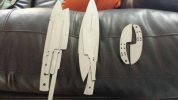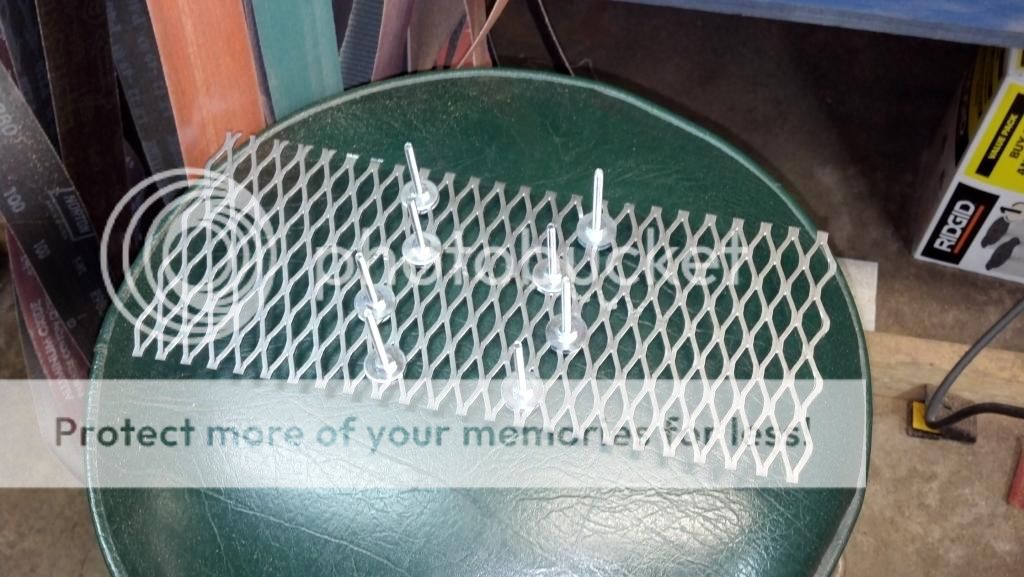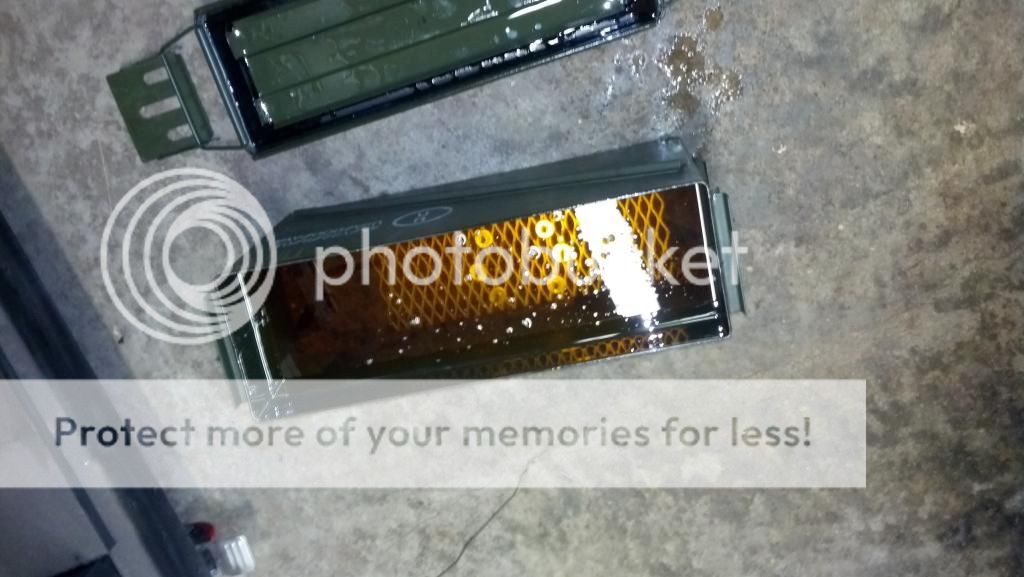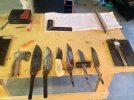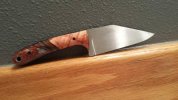- Joined
- Jun 5, 2012
- Messages
- 1,071
It works wonderfully, in fact I think that knifemaking is probably amongst the best uses for these small form factor machines.
I actually posted some comments on a thread in this forum a while back, regarding the usefulness of these machines for knifemaking tasks. I'm a former professional machinist/fabricator, and have used Bridgeports, top of the line CNC's, etc. These small machines get a bad rap quite often, but they are just fine as long as you keep your expectations realistic. They excel for small parts in a small shop, which is a very common situation for many knifemakers.
They can be troublesome if you have zero experience with this type of equipment, and get a machine that needs tweaking. I don't know if they are the best machines to learn on, on the other hand a lot of knifemakers are pretty capable individuals, so I don't see that it's anything that time and determination couldn't handle.
If you are handy and/or have some experience, you can get very good results with these. There's just nothing else that compares, as far as being able to plug into a normal wall outlet, and being able to be moved with normal equipment, basically an engine hoist and a pickup truck.
The mill is a Grizzly G0463, which is a step up in size from the mini-mills, but still compact enough to be workable for a small shop and ability to move. I like it because the spindle takes R8 collets, which are the same size as Bridgeport/clone mills. That makes them super easy to get ahold of for cheap.
The lathe is a G4000, if I recall correctly it is a 9"x20". It was basically the smallest one that I felt like could still get some decent sized work done. I added a quick change Aloris style toolpost, which I highly recommend, the machine comes stock with a traditional set-screw toolpost, which works but isn't particularly convenient.
I spent a good chunk of yesterday's shop time reconciling my mill and lathe tooling back to usable, everything was jumbled up pretty bad after the move. I thought you might like to see what I've got for tooling so I snapped a couple pics of the drawers. What I have is what I would consider a good baseline tooling setup, not amazingly diverse, but not skimpy either. With what I have here I can accomplish a good deal of machining tasks.
The left side is mostly lathe, the right mostly mill. Bottom left is various tool holders for the quick change toolpost. Above that are some various measuring tools, centers, lathe bits, and boring bars. On the mill side, I have parallels for the vise, squares, R8 collets from 1/8" to 3/4". On the side are various milling cutters, center drills, etc. The bottom is more assorted milling cutters, roughing mills, extra long mills, etc. (not pictured, I also have an adjustable micrometer boring head, a self-reversing tap head, and a Jacobs chuck with R8 arbor which basically turns it into a fancy drill press)

In the bottom drawer I have various lathe tooling and attachments, service tools, taps and dies, drill sets, and reamers. The spare drills and reamers should not be stored how I have them, I'm still working on that at the moment. (not pictured because they're too heavy for this drawer, I have a swivel base for the mill vise, and a 4-jaw chuck for the lathe that allows irregular shaped, poorly centered, or warped parts to be spun on the lathe on center)
(not pictured because they're too heavy for this drawer, I have a swivel base for the mill vise, and a 4-jaw chuck for the lathe that allows irregular shaped, poorly centered, or warped parts to be spun on the lathe on center)

I actually posted some comments on a thread in this forum a while back, regarding the usefulness of these machines for knifemaking tasks. I'm a former professional machinist/fabricator, and have used Bridgeports, top of the line CNC's, etc. These small machines get a bad rap quite often, but they are just fine as long as you keep your expectations realistic. They excel for small parts in a small shop, which is a very common situation for many knifemakers.
They can be troublesome if you have zero experience with this type of equipment, and get a machine that needs tweaking. I don't know if they are the best machines to learn on, on the other hand a lot of knifemakers are pretty capable individuals, so I don't see that it's anything that time and determination couldn't handle.
If you are handy and/or have some experience, you can get very good results with these. There's just nothing else that compares, as far as being able to plug into a normal wall outlet, and being able to be moved with normal equipment, basically an engine hoist and a pickup truck.
The mill is a Grizzly G0463, which is a step up in size from the mini-mills, but still compact enough to be workable for a small shop and ability to move. I like it because the spindle takes R8 collets, which are the same size as Bridgeport/clone mills. That makes them super easy to get ahold of for cheap.
The lathe is a G4000, if I recall correctly it is a 9"x20". It was basically the smallest one that I felt like could still get some decent sized work done. I added a quick change Aloris style toolpost, which I highly recommend, the machine comes stock with a traditional set-screw toolpost, which works but isn't particularly convenient.
I spent a good chunk of yesterday's shop time reconciling my mill and lathe tooling back to usable, everything was jumbled up pretty bad after the move. I thought you might like to see what I've got for tooling so I snapped a couple pics of the drawers. What I have is what I would consider a good baseline tooling setup, not amazingly diverse, but not skimpy either. With what I have here I can accomplish a good deal of machining tasks.
The left side is mostly lathe, the right mostly mill. Bottom left is various tool holders for the quick change toolpost. Above that are some various measuring tools, centers, lathe bits, and boring bars. On the mill side, I have parallels for the vise, squares, R8 collets from 1/8" to 3/4". On the side are various milling cutters, center drills, etc. The bottom is more assorted milling cutters, roughing mills, extra long mills, etc. (not pictured, I also have an adjustable micrometer boring head, a self-reversing tap head, and a Jacobs chuck with R8 arbor which basically turns it into a fancy drill press)

In the bottom drawer I have various lathe tooling and attachments, service tools, taps and dies, drill sets, and reamers. The spare drills and reamers should not be stored how I have them, I'm still working on that at the moment.

Last edited:





